Este post está escrito en dos idiomas y dividido para facilitar la lectura.

¿Qué es un itamae? Literalmente su significado es un chef de cocina japonesa, significa estar ''delante de la tabla''.
La cocina japonesa es inmensamente variada, pero su caracterización es sin duda el sushi, el cuál se ha extendido por todo el mundo fusionándose con otras culturas, de aquí es dónde nace lo que muchos conocemos como ''makis''.
Debemos recordar entonces que los makis no son lo mismo al sushi tradicional de Japón.
Hay dos formas ''oficiales'' para llamar a quiénes se encargan de preparar éste tipo de comida, sushiman ó itamae, aunque yo considero que el verdadero Itamae es quién dedica toda su vida a esto, que por cierto, en Japón para llegar a serlo es un camino bastante largo.
Hoy, aprovechando un poco el tiempo libre, decidí tomar algunas fotografías y videos sobre el proceso de armado de un ''maki'' que repito, no es el sushi tradicional.
What is an itamae? Literally meaning a chef of Japanese cuisine, it means to be ''in front of the table''.
Japanese cuisine is immensely varied, but its most characteristic is undoubtedly sushi, which has spread around the world merging with other cultures, from here is where it was born what many know as ''makis''.
We must remember then that makis are not the same as traditional Japanese sushi.
There are two ''official'' ways to call those who are in charge of preparing this type of food, sushiman or itamae, although I consider that the real Itamae is the one who dedicates his whole life to this, which by the way, in Japan to become one is quite a long way.
Today, taking advantage of some free time, I decided to take some pictures and videos about the process of assembling a ''maki'' which, I repeat, is not the traditional sushi.

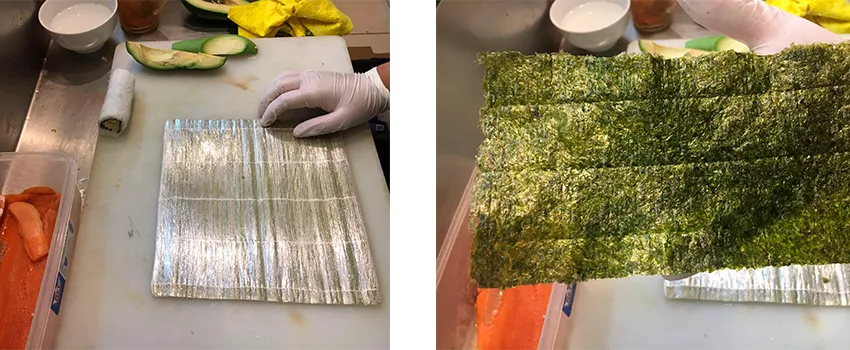
Nuestro makisu o esterilla debe estar forrado con papel film de cocina, esto para facilitar el armado del maki. Además, evita que se ensucie nuestra esterilla.
El arroz debe ser colocado por la parte del alga nori que tiene aspecto de corrugado.
Our makisu or mat should be lined with plastic wrap to make it easier to assemble the maki. In addition, it prevents our mat from getting dirty.
The rice should be placed on the corrugated side of the nori seaweed.
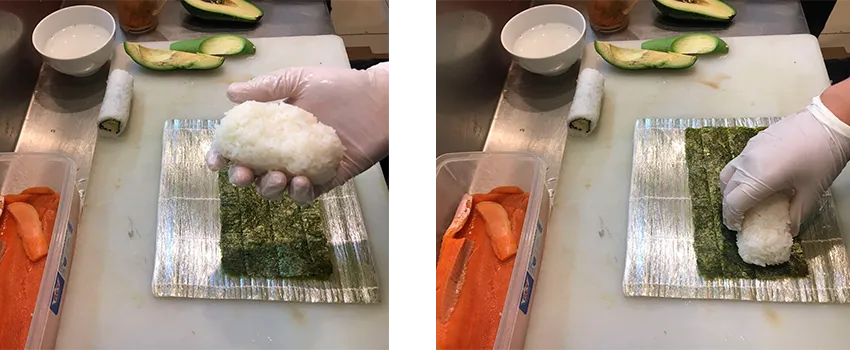
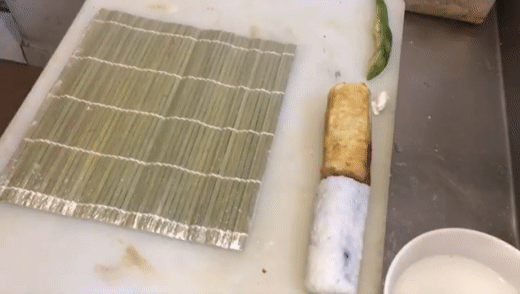
Nuestra bola de arroz (el cual se llama shari) debe de pesar 140 gr. Es lo respectivo, para que nuestro maki no quede muy grueso.
Debemos colocarlo desde el lado izquierdo hacía el derecho dejando por encima 1 dedo de nori libre.
Con ayuda de nuestros dedos iremos extendiendo por nuestro nori hasta cubrir (recuerda dejar 1 dedo por la parte de arriba de nori).

Our rice ball (which is called shari) should weigh 140 gr. It is the respective, so that our maki is not too thick.
We must place it from the left side to the right side leaving 1 finger of nori free on top.
With the help of our fingers we will spread it over our nori until it is covered (remember to leave 1 finger on the top of the nori).
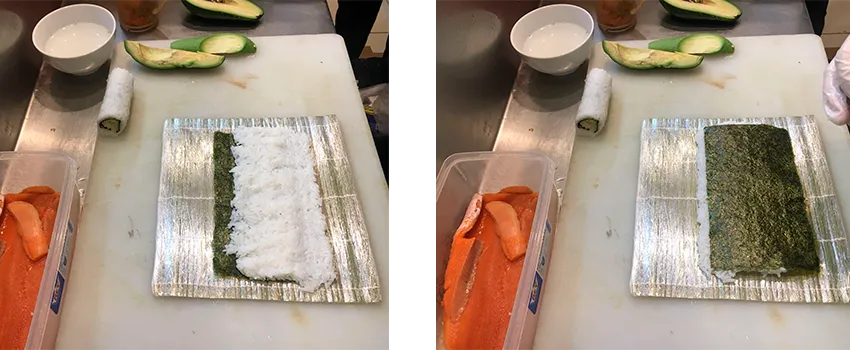
Justo como podemos apreciar en la foto.
Just as we can see in the photo.
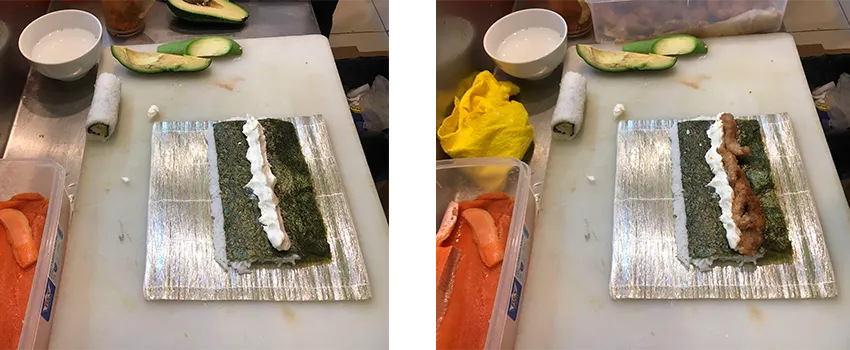
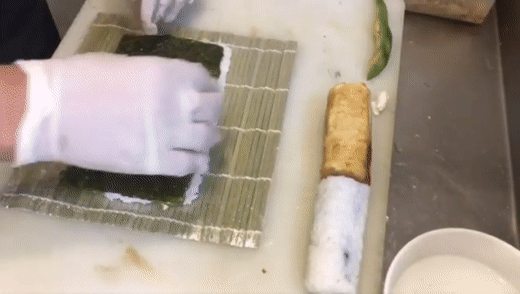
Como ya les había mencionado, los makis en sí son una fusión del sushi tradicional con otras culturas, así que el relleno créanme que puede variar muchísimo, en éste caso pueden experimentar con los sabores.
Aunque también si lo desean, pueden realizar uno tradicional, es el mismo procedimiento de armado, diferente relleno.

As I had already mentioned, the makis themselves are a fusion of traditional sushi with other cultures, so believe me the filling can vary a lot, in this case you can experiment with the flavors.
.
However, if you wish, you can also make a traditional one, it is the same assembly procedure, different filling.
.
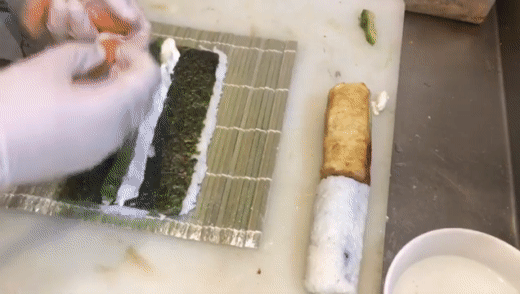
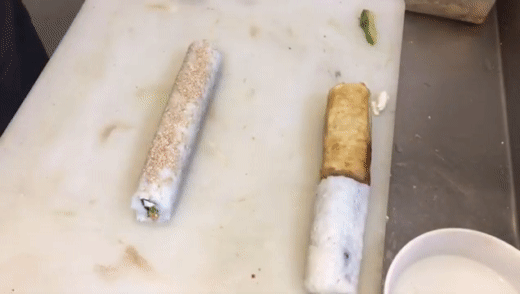
La forma en cómo yo corto los makis ya es algo adquirido por la experiencia (si no se tiene la practica suele ser un poco peligroso para nuestros dedos). Lo ideal es que nuestro dedo índice nos sirva de guía para que todos los rolls queden del mismo tamaño.
Nuestro cuchillo aparte de que debe estar muy bien afilado, el filo debe estar ligeramente humedecido con agua para facilitar el corte.
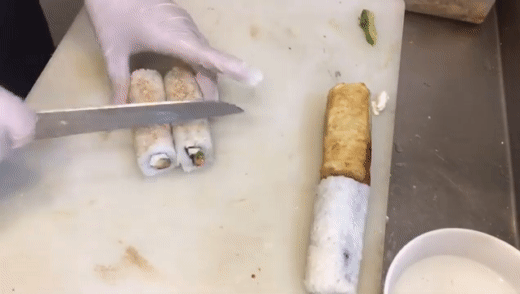
The way I cut the makis is something acquired by experience (if you do not have the practice it is usually a little dangerous for our fingers). Ideally, our index finger should serve as a guide so that all the rolls are the same size.
.
Our knife must be very sharp and the cutting edge must be slightly moistened with water to facilitate cutting.
.

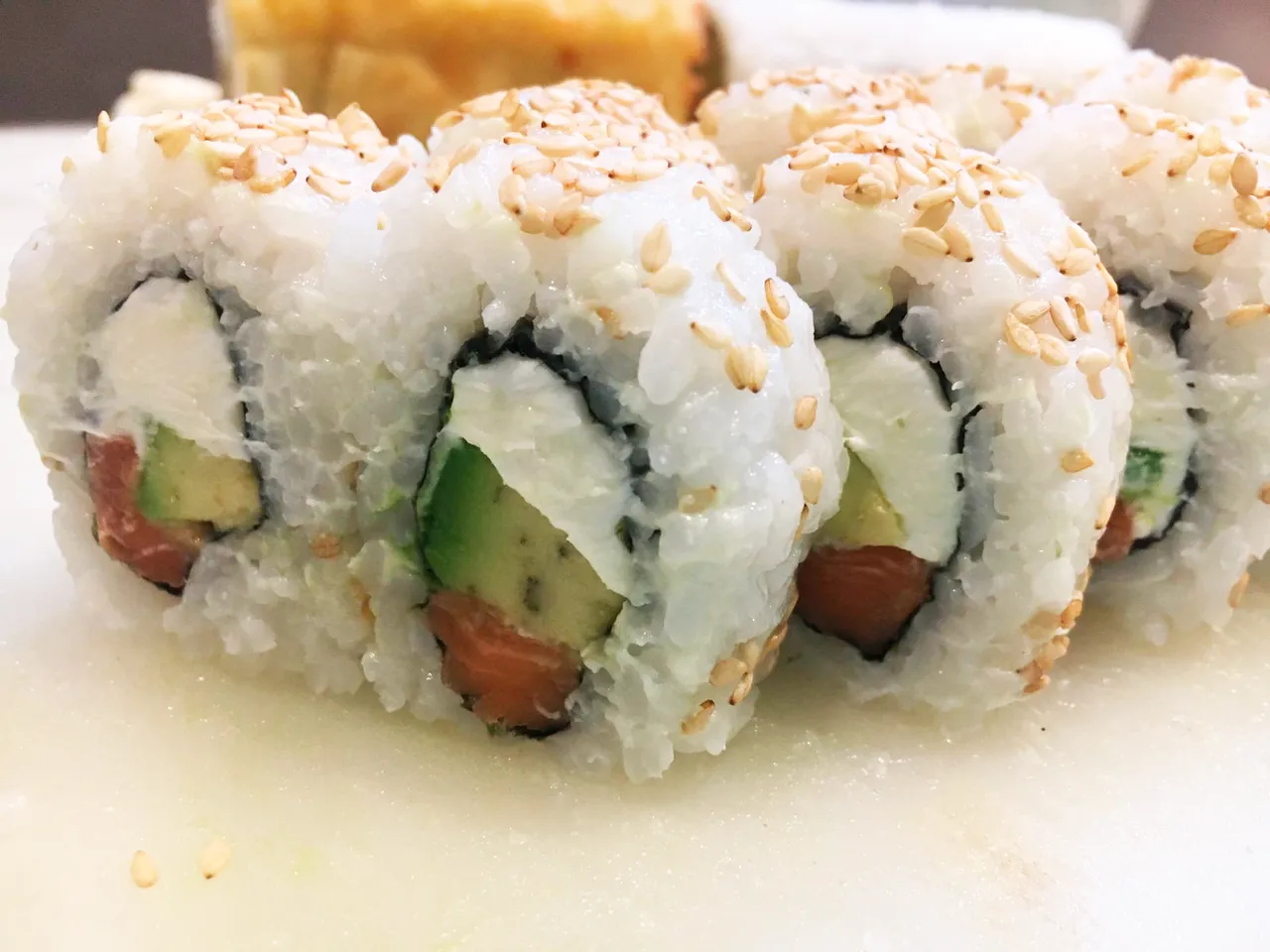
Gracias por leerme.
Si deseas aprender con respecto a la preparación de sushi desde casa, como lo es la receta del arroz, medidas y posibles rellenos no dudes en comentarlo.
Thank you for reading me.
If you want to learn more about the preparation of sushi from home, such as the rice recipe, measurements and possible fillings, do not hesitate to comment.
